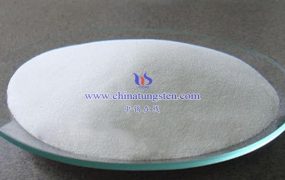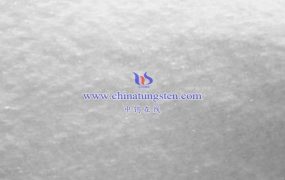Phosphotungstic acid-catalyst
Phosphotungstic acid and other heteropoly acids can be used as catalysts, and their strong acidity and thermal stability make them suitable for some catalytic reactions. The solution of phosphotungstic acid can be used as a homogeneous catalyst, and if it is on the substrate of aluminum oxide or silicon dioxide, it is a heterogeneous catalyst. The following are some examples of phosphotungstic acid catalysts:
As a homogeneous catalyst in the addition of propylene to 2-propanol.
In the Prince reaction, as a homogeneous catalyst.
It is used as a heterogeneous catalyst in the dehydration reaction of 2-propanol to propylene and methanol.
Phosphotungstic acid – printing and dyeing, pigment
Phosphotungstic acid has been used to precipitate different dyes to form precipitated pigments, such as basic dyes or tritylamine dyes, such as pararosaniline derivatives.
Phosphotungstic acid-biological sample staining
Phosphotungstic acid is commonly used in the staining of cell samples. It is often used together with hematoxylin, called phosphotungstic acid-hematoxylin staining. Some three-color staining reagents also use phosphotungstic acid. When used with a transmission electron microscope , will use phosphotungstic acid for negative staining.
Phosphotungstic acid-hematoxylin staining (PTAH)
Mallory first mentioned this staining method called PTAH in 1897. Depending on the tissue, it will appear reddish brown or blue after staining. This property of simultaneously staining different tissues with different colors differs from other staining methods that also use hematoxylin, such as alum-hematoxylin.
The mechanism of phosphotungstic acid-hematoxylin staining and the role of phosphotungstic acid are not yet fully understood. Interestingly, the active ingredient of hematoxylin is its oxidized form, that is, haematin. Although there is little literature on hematoxylin staining, phosphotungstic acid may form a precipitated pigment with hematoxylin. As a result of examining one sample, it was found that there were three components of different colors, namely blue, red and yellow. Some studies have performed phosphotungstic acid-hematoxylin staining for different substances (such as amino acids, amines, purines, and pyrimidines) and confirmed that they will appear in different colors.
Phosphotungstic acid-trichrome staining reagent
This kind of reagent includes two or three kinds of dyeing reagents, used together with phosphotungstic acid, each dye may be used successively, or used simultaneously in one procedure. These reagents cause different tissues to appear different colors. The role of phosphotungstic acid in trichrome staining reagents is not yet fully understood. There are many different explanations, including that phosphotungstic acid is a mordant between the dye and the tissue, or that phosphotungstic acid binds to the tissue, blocking the entry of specific dyes.
Phosphotungstic acid – negative staining method
The basis of phosphotungstic acid negative staining method is that it will be adsorbed by the surface of tissues or viruses, and phosphotungstic acid itself has a high electron density. Because phosphotungstic acid has twelve tungsten atoms, and the atomic number of tungsten is 74, it can increase the electron density. Because the mechanism of phosphotungstic acid adsorption by tissues is not affected by acidity and alkalinity, some studies believe that the adsorption mechanism is through electrostatic force rather than hydrogen bond.
Phosphotungstic Acid-Analytical Reagent
Potassium phosphotungstate is different from its salt of phosphotungstate. Because of its low solubility, potassium phosphotungstate has been proposed as a gravimetric method for potassium.
Phosphotungstic acid-protein precipitation
In many analytical methods, phosphotungstic acid is used to precipitate proteins. Phosphotungstic acid was once regarded as a “universal precipitant” for polar proteins. The imidazole group precipitates, but does not precipitate with α-amino acids.
Phosphotungstic acid – medical use
The medical use of phosphotungstic acid is very little, and an experiment of liver necrosis in mice is related to phosphotungstic acid.
Phosphotungstic acid-composite ion exchange membrane
Some studies use heteropolyacids, including phosphotungstic acid, as materials for composite proton exchange membranes. The advantage of using these composite materials in fuel cells is that they can improve the working conditions.

More details of tungstate product, please visit website: tungstate.net
Please contact CHINATUNGSTEN for inquiry and order of tungstate:
Email: sales@chinatungsten.com
Tel.: 86 592 5129595


